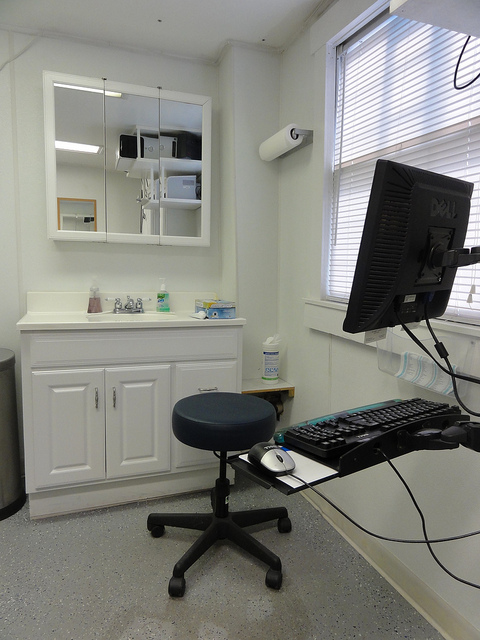In this second article regarding sustainability of provider networks and managing health plan costs, we will focus on carve-out programs, integration of provider delivery models and direct contracting.
As referenced in
the first article, the Affordable Care Act (ACA) has hurt re-pricing through preferred provider networks (PPNs). Claim amounts being billed by specialty and institutional providers has escalated to such a level that preferred provider organizations (PPOs) have lost much of their appeal. As a result, the introduction of commercial accountable care organizations (ACOs), direct employer/provider contracting, narrow network arrangements and cost-to-charge methodologies have gained significant market share.
While the self-funded industry has begun applying many of these alternatives, a high percentage of employers are unwilling to fully embrace some of these changes. Instead, we are seeing intermediate steps through the application of network carve-outs, integration of existing PPOs with specialty care vendors and limited direct contracting.
What outcomes do these intermediate steps offer an employer? To start with, a better control of healthcare consumption and lower overall claim costs.
Let’s explore the basics of network carve-out programs. The simplest carve-out is an organ transplant product that removes claims from the underlying medical excess coverage and places them with a separate policy. In most cases, the transplant policy includes a centers of excellence network where the procedure must be completed for 100% of the claim to be eligible for reimbursement. When a non-participating facility provides the service, reimbursement may be limited to a lower percentage of the bill and will in many cases have caps. These products may include individual deductibles, waiting periods and lifetime maximums.
Less common carve-out solutions are non-risk bearing and target specific treatment types, such as renal dialysis or surgical events. A renal or surgical carve-out is accomplished through a change in plan document provisions that move the service to a non-network benefit. This can be a challenge when dealing with national PPOs, which typically include these service providers in their networks.
When considering any form of carve-out program, the client should take care to avoid any reference to a specific disease state and mind the gaps that could potentially exist between the plan document, underlying medical stop loss policy and carve-out policy or provision.
The industry is buzzing with the term “transparency,” yet most people are unable to determine the actual cost of service provided to patients. Solutions include the integration of existing PPO networks and specialty care providers through direct contracting and domestic tourism. Additionally, a number of surgical centers are now publishing fee schedules and treatment outcomes online. This disclosure is enticing patients to acquire services in these facilities. The result is a creation of carve-out referral agreements for self-funded employers with fees significantly lower than the most aggressive PPO contract.
If the initial reports are accurate, then, in addition to significant savings, patients are experiencing shorter recovery times and fewer complications than through traditional networks. We are also seeing an integration of specialty care providers with traditional networks as a cost-effective tool. In our experience, clients have integrated direct contracts with oncologists, orthopedists, surgical centers, dialysis centers and pain management clinics to more effectively manage care and cost. This approach may be challenged by traditional PPO networks, but the outcome is worth the effort.
In a number of cases, we have found it effective to integrate PPOs for institutional services only and contract directly with medical groups based on a capitated model. In other situations, we have contracted with a PPO network for professional services tied to the Medicare Regionally Based Relative Value Schedule (RBRVS) and re-priced the institutional claims on a cost-to-charge or referenced-based pricing scenario. We will discuss reference-based pricing more in a coming article. For PPOs to remain relevant, they must adapt to these emerging innovative solutions.
For some, innovation will start with direct contracting on behalf of our client health plans. The process of direct contracting can be relatively painless when working with an independent practice association (IPA) or multispecialty medical group. The purpose of these groups is to establish and oversee patient protocols, referrals and outcomes management on behalf of their member providers with health plans and health maintenance organizations (HMOs). Medical groups typically contract with payers through discounted fee for service, Medicare RBRVS or capitation (pre-payment).
While direct contracting can take many forms, our discussion will focus on provider engagement through capitation arrangements. Since ACA's implementation, providers have become more receptive to assumption of risk through direct capitation agreements with employer groups. In its purest form, capitation is essentially a monthly retainer paid to the provider for services to be rendered to the covered member. The provider is then responsible to deliver care with a goal to making a profit from the monthly pre-payment. For this to be effective, the provider must have a patient population whose utilization and medical histories support this methodology.
Some may ask how capitation is possible without an HMO license. In some states, such as California, laws allowing the creation of HMOs do not require licensing for pre-payment arrangements when risk-sharing between various medical groups and institutions does not exist. Therefore, if a medical group contracts without sharing in a profit or risk pool with other not-related practices, capitation may be allowed. This approach has been implemented and successfully tested through the Department of Managed Healthcare in California.
With this in mind, I would caution employers from running out to look for a willing medical group. The challenge is to find the right medical group that can meet all of the client’s healthcare needs. Will the capitated approach work with institutional providers? The simple answer is yes, though in our experience the process is difficult because many facilities struggle to clearly identify cost of care, and hospitals do not control direction of care. In settings where capitated institutional models are not practical, we have utilized hospital-only PPO carve-out and referenced-based reimbursement solutions with varying degrees of success.
Providers are rushing to establish community risk assumption models, resulting in the elimination of traditional insurance contracts. We will address the provider direct model more in the following article.
While we have focused on direct contracting through capitation, I want to briefly introduce another successful approach that integrates current PPO contracting methods with HMO-type protocol management and measurements. The measurements may include average length of stay, bed days per thousand, re-admission and encounter frequency, delivery setting, prescription dispensing and adherence to published standards of care. Practice management providers may participate in profit sharing even in a self-funded plan.
This model is not commonly available through third-party administrators (TPAs) because most systems are not equipped to support the protocol and outcomes management required for risk-sharing models. The TPAs with the greatest potential for administering these programs are those that are owned by hospital or provider organizations and that manage risk on behalf of HMO contracts. That being said, we have identified several TPAs that offer these services to self-funded employer plans.
The topic of provider contracting will be debated for years to come, and the number of opinions are as great as the options they represent. The challenge for us today is to move the needle of cost management and improved outcomes forward.


